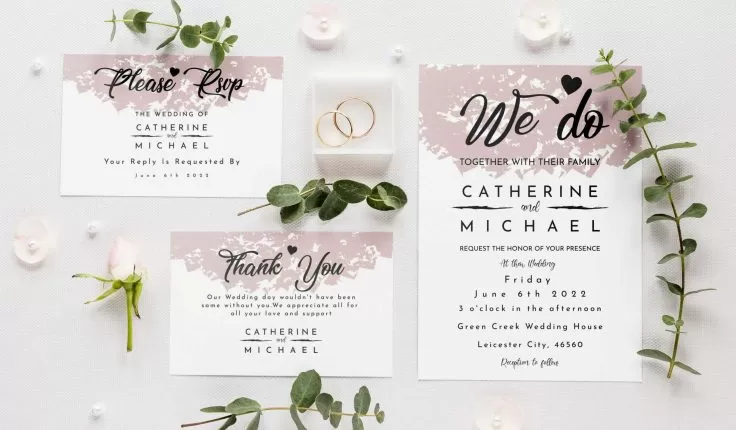What should be included in a traditional wedding order of service?
0 Views

A traditional wedding is a beautiful celebration of love, commitment, and unity. One of the key elements in planning a traditional wedding is creating a memorable wedding order of service, which outlines the proceedings of the ceremony. Additionally, printing wedding invitations is another crucial aspect of the wedding planning process. In this comprehensive guide, we will delve into the essential components of a traditional wedding order of service and provide valuable insights into the art of printing wedding invitations.
I. Understanding the Purpose of a Wedding Order of Service
A. Setting the Tone
- The wedding orders of service serves as a program for the event, setting the tone and expectations for the ceremony.
- It provides guests with a clear understanding of the order of events, helping them follow along and engage in the celebration.
B. Personalization
- Tailoring the order of service to reflect the couple’s personalities, beliefs, and cultural traditions adds a personal touch to the ceremony.
- Including meaningful readings, music, and rituals can make the event truly unique and memorable.
C. Keepsake
- Many couples choose to design their wedding order of service as a keepsake for themselves and their guests.
- The program can include photos, anecdotes, and a heartfelt message from the couple, making it a cherished memento of the special day.
II. Components of a Traditional Wedding Order of Service
A. Cover and Design
- The cover should feature an elegant design that matches the overall theme and style of the wedding.
- Incorporating the couple’s names, wedding date, and a meaningful image can add a personal touch.
B. Introduction
- The program typically begins with a welcoming message from the couple or a brief introduction to the ceremony.
- This section may also include a note of gratitude to the guests for sharing in the celebration.
C. Order of Events
- Clearly outline the sequence of events, including the processional, vows, exchange of rings, readings, and any special rituals.
- Include the names of the participants (e.g., bridesmaids, groomsmen) to acknowledge their roles.
D. Hymns and Music
- List the hymns or songs that will be performed during the ceremony.
- Include the titles and the names of performers or musicians.
E. Readings and Prayers
- If there are readings or prayers in the ceremony, provide the names of the readers and the texts.
- Consider including translations or explanations if the readings are in a different language or have special significance.
F. Vows and Exchange of Rings
- Include the text of the vows the couple will exchange, if desired.
- Describe any symbolic gestures or rituals related to the exchange of rings.
G. Closing Remarks
- Conclude the order of service with a message of hope, love, and unity.
- Thank the guests once again for being a part of the celebration.
III. Designing and Printing Wedding Invitations
A. Invitation Style
- Choose an invitation style that aligns with the wedding theme and the couple’s preferences.
- Common styles include traditional, modern, rustic, and destination-themed invitations.
B. Color Palette and Typography
- Select a color palette that complements the wedding colors and theme.
- Choose legible fonts that match the overall aesthetic and are easy to read.
C. Information to Include
- Essential details for wedding invitations include the names of the couple, date, time, venue, and RSVP instructions.
- Optionally, include a map or directions to the venue and accommodation information for out-of-town guests.
D. RSVP Cards
- Design and print RSVP cards that make it convenient for guests to respond.
- Include a self-addressed and stamped envelope for easy mail-back.
E. Printing Methods
- Explore different printing methods such as digital printing, letterpress, or foil stamping, depending on the desired look and budget.
- Ensure that the print quality is high to create a lasting impression.
IV. Invitations as a Reflection of the Couple
A. Personalization
- Customize the invitations to reflect the couple’s love story, interests, and cultural background.
- Incorporate meaningful symbols, quotes, or motifs that hold significance to the couple.
B. Timing and Mailing
- Plan the timing of sending out invitations to ensure guests have ample time to respond and make travel arrangements.
- Consider sending save-the-date cards well in advance if the wedding is a destination event.
C. Invitation Suites
- Create a cohesive invitation suite by designing matching elements such as envelopes, response cards, and information inserts.
- Consistency in design and theme enhances the overall presentation.
V. Etiquette and RSVP Management
A. Addressing Guests
- Follow proper etiquette for addressing guests on the invitation envelopes.
- Clearly specify who is invited, whether it’s just the guest, the guest and a plus-one, or the entire family.
B. RSVP Tracking
- Implement an organized system for tracking RSVPs, including online RSVP platforms or traditional response cards.
- Keep a record of guests’ dietary preferences, allergies, and any special requests.
C. Follow-Up and Reminders
- Send reminders to guests who have not responded by the RSVP deadline.
- Ensure that the final headcount is provided to the caterer and venue well in advance.
Conclusion
Crafting a traditional wedding order of service and printing wedding invitations are essential components of planning a memorable wedding celebration. These elements not only provide structure to the ceremony but also offer an opportunity for personalization and reflection of the couple’s love story. By paying attention to design, details, and etiquette, couples can create a meaningful and beautiful wedding experience for themselves and their guests, ensuring that their special day is truly unforgettable.
Related Posts
How Do You Choose the Right Angle Bar Size and Material for Your Project?
Andrin Andrin / July 18, 2024












